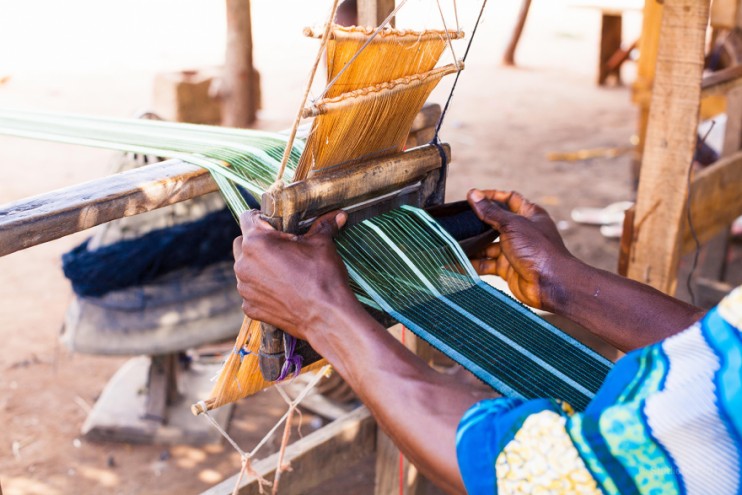Mr Bayo Ademiluyi is a lawyer by profession and Head of Design at Ty-Tys. A company that produces hand-made distinctive neckwear (i.e. ties, bowties), pocket squares, laptop bags, ladies’ tote bags, wall hangings and scarves using traditional African fabrics, predominantly aso-oke.Continue reading
African Traditional Wedding Attires
Marriage ceremonies across Africa’s ethnic groups are not only deeply rooted in the continent’s respect and appreciation for family, but are also a celebratory affair with lots of food and beautiful African traditional wedding attire.Continue reading
Adire Work Wear Made in Nigeria by Delavi Couture
Adire work wear by Delavi Couture is certainly a must have. You already know that a work wear is basically what you wear to work. What better way to step into work, than with an Afrocentric look. Your work wardrobe doesn’t have to be boring, you can still maintain your stylishness with these Adire work wear collection. One of the reasons why I love the Adire work wear collection by Delavi Couture is because they are so colourful, comfortable and proudly made in Nigeria.
Continue reading
The History Of Aso-Oke Textile
Aso-oke is the traditional wear of the Yoruba’s (the tribe of the southwest people in Nigeria, Africa). The Yoruba’s are the second largest tribe in Nigeria after the Northerners. Aso-Oke is a cloth that is worn on special occasions by the Yoruba’s usually for chieftaincy, festivals, engagement, naming ceremony and other important events.
It is said that “the beauty of Aso-Oke comes out more when it is taken as Aso-Ebi (group of people e.g. friends, families e.t.c)”, however Bellafricana is prepared to show the beauty of Aso-Oke in interior decorations, fashion, shoes, bags and many more.
Cloth weaving (Aso-Oke) started centuries ago amongst the Yoruba’s but predominantly amongst the Iseyin’s (Oyo-State), Ede (Osun State) and Okene (Kogi State) and some areas in Ghana. The fibres used for weaving are either locally sourced or brought from neighbouring states (northern parts of the country).
Post Event Press Release – Bellafricana ACE Awards 2017
[dropcap custom_class=”normal”] The Bellafricana ACE Awards 2017 day was marked and Nigeria remains breath-taking following the first and spectacular launch of Bellafricana ACE Awards 2017 which took place on the 17th of April, 2017 at D-Venue, Water Corporation Drive, Off Ligali Ayorinde, Lagos, Nigeria.
You can almost still feel the excitement in the air resonating from the crowds on the day to witness this laudable event, the first of its kind in Nigeria and the whole of Africa. [/dropcap]
Continue reading
Bellafricana ACE Awards 2017: Complete List of Nominees
[dropcap custom_class=”wh”] The complete list of Bellafricana ACE Awards nominees have been released and it is with great pleasure to see that well deserving brands made it on… [/dropcap]
Adding value and creating impact is a noble cause that should be awarded. This by no means undermines or belittles the efforts of the brands that weren’t nominated, far from it.
Continue reading
The Bold of Art: Chief Nike Okundaye Davies
[dropcap custom_class=”normal”] My first encounter with Chief (Mrs.) Nike Okundaye Davies was when I visited her Art Gallery at Ikate Elegushi roundabout Lekki-Epe Expressway, Lagos, Nigeria. She is a very lovely and amiable person and I am glad to do this write up on her.
Several years ago I saw a road sign saying “Nike Art”, on my way to my neighbour’s wedding. I think that was my first time of being awake while passing through Lekki-Epe expressway.
My name is Nike and I love art and every form it is presented in. So you can imagine how fast my attention was piqued when I saw this sign. That sign remained in my memory for a long time…. [/dropcap]
Continue reading
The History Of Adire Textile
Adire textile, pronounced as Ah-DEE-reh is an age old indigo die textile indigenous to the Yoruba tribe of the Southwestern Nigeria. This textile is rich in beauty and culture as much as it has a rich history.
In this post, you will learn about the history of the Àdìre textile and follow its’ progression through time. How did the textile come about, where was it first made, who wore it first, how did it travel to other tribes and countries, where it is on the global sphere?
Yes, we had all these questions and more and knew many people out there too must have pondered on this also. To answer some of these questions, we at Bellafricana have done an extensive research on the subject to share the knowledge with the world. Let’s read on…

The Origin of Adire Textile
Let us begin with a little introduction for the benefit of those unfamiliar with this textile. Adire, is a Yoruba (a tribe in Southwestern Nigeria) word for tie and dye. It was first made by Yoruba women of old by using a variety of resist-dyeing techniques.
As the translation of the name suggests, the earliest pieces of Adire were probably simple tied designs on cotton cloth handspun and woven locally. [1]
I remember seeing a movie called “Odùduwà“, where the first wife of Oduduwa thought women how to tie and dye clothes. The ideology according to that movie’s story line was that before tie and dye textile came, clothes were only available in white colours.
While putting this write up together, we discovered that the origin of Adire might be traced to the archaeological discovery in some Tellem burial caves of Mali. Among the archeological findings, is a cap bearing the extant and popular Osubamba motif common in the Adire art of the Yoruba people.
This coupled with the fact that the Yoruba of Old Oyo kingdom exported their art across and beyond West Africa through trade, military activities and political dominance. [2]
I would say this supports the notion that Adire was first produced in Jojola’s compound of Kemta, Abeokuta by Chief Mrs. Miniya Jojolola Soetan, the second Iyalode (Head of Women) of Egba land. She then passed on the process to her children and onward to the future generations. [3]
Related Post: The History Of Aso-Oke Textile
The Making of Adire Textile
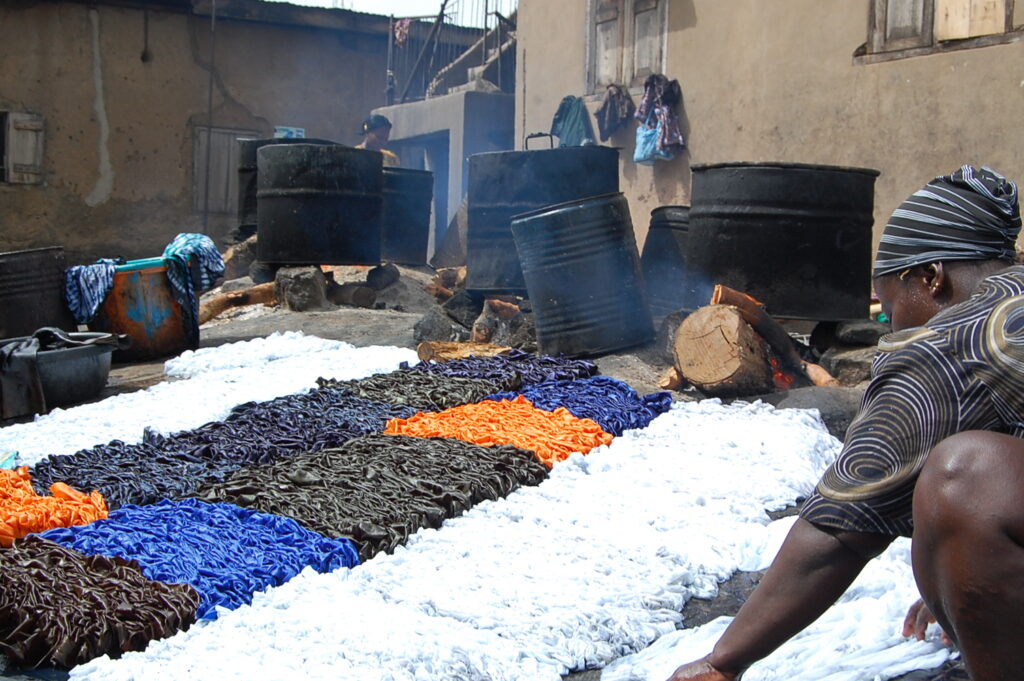
The first Adire material was made with Teru (local white attire) and Elu (local Dye) made from elu leaf which is planted in the Saki area of Oyo state. There was an increase in tie-dye makers and artistic endeavours in the 20th century when more fabrics imported from European merchants became available for dyeing.
You might wonder, why bother tying the cotton fabric before dyeing it? The simple answer to that is, the tying method prevents the absorption of dye to the particular area of the fabric that is tied. [4]
In an academic research published in the Journal of African Studies, the researchers; Gausa Solomon and Abubakar Ezra, stated that Adire patterns are made by pleating of the cloth. This is done so that the colour is kept from inside of the folds by knotting and dyeing it or stitching with raffia fiber from banana leaves or thread. [5]
Related Post: Adire Cloth in Nigeria: A Book Review
When more cotton fabrics to dye with became available in Nigeria, new techniques of resist dyeing were developed. According to Wikipedia, there are three primary resist techniques used in Nigeria presently:
Oniko: This process involves tying raffia around hundreds of individual corn kernels or pebbles to produce small white circles on a blue background. The fabric can also be twisted and tied on itself or folded into stripes.
Alabere: Stitching raffia onto the fabric in a pattern prior to dyeing. The raffia palm is stripped, and the spine sewn into the fabric. After dyeing the raffia is usually ripped out, although some choose to leave it in and let wear and tear on the garment slowly reveal the design.
Eleko: Resist dyeing with cassava paste painted onto the fabric. Traditionally done with different sizes of chicken feathers, calabash carved into different designs etc., in a manner similar to block printing. Since the early twentieth century, metal stencils cut from the sheets of tin that lined tea chests have also been used.
The simplest design for tie and dye is made by pulling up portions of the cloth at an interval, and either knotting or binding round them before dyeing. The tied portion is later removed after dyeing thereby creating a pattern of circles.
Related Post: Nike Art Gallery
In some situations, seeds or pebbles are sometimes tied into the cloth to create patterns. Also, some impressions may be sown into the fabric with thread and the stitches drawn up tightly before dyeing
Click play below to watch the video documentary of Adire textile amongst Yorubas by Thorolf Lipp.
Adire’s Journey Through The Globe
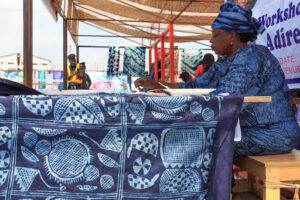
So many skills of African heritage were transported from country to country or entirely out of the continent through traders. Some of these transition came about either through adventurous traders who traded goods from country to country or through avenues such as slave trading.
Related Post: African Black Soap: The History, Components and Benefits
During the slave trade many slaves were skilled in weaving; the skill was used by the slave owner as another form of income. This is one of the ways some part of the African cultural heritage travelled from one continent to the other.
In those days, textiles were also used as a form of identity with each tribe having their own unique patterns which also made it easy to spot outsiders. In the case of Adire, it is said that for a long time, people who were not from certain families were not allowed to partake in tie-dye production as it was a part of the family’s heritage.
History has it that the tie-dye technique became recognised as a form of art in several countries across the globe. A publication on Tie-Dye US has it that, tie and dye became all the rage during the Vietnam War period.
This was when people craved peace and freedom from the starched idea of parents and authority. Then, tie-dye was a form of artistic expression (as well as protest) for the hippie, psychedelic generation who were free spirited and uninhibited during this difficult time in American history.
These artistic peace-lovers embellished t-shirts, curtains, tapestries, pants, and anything else that would proclaim their individuality! Tie-dye made people happy then, as it does today! It has remained the utmost symbol of the sixties! And, in all it’s forms, tie-dye is not only an art of fabric, but a piece of our world history. [6]
Related: Adire Cloth in Nigeria : A Book Review on Adire Textile
Ways Adire Has Been Used in History Till Date
In clothing, there are endless possibilities in what you can do. Our founder at Bellafricana, Bukky Asehinde, can’t get enough of the Adire textile. I added a lovely picture of her looking absolutely stunning in one of her dresses made from adire.
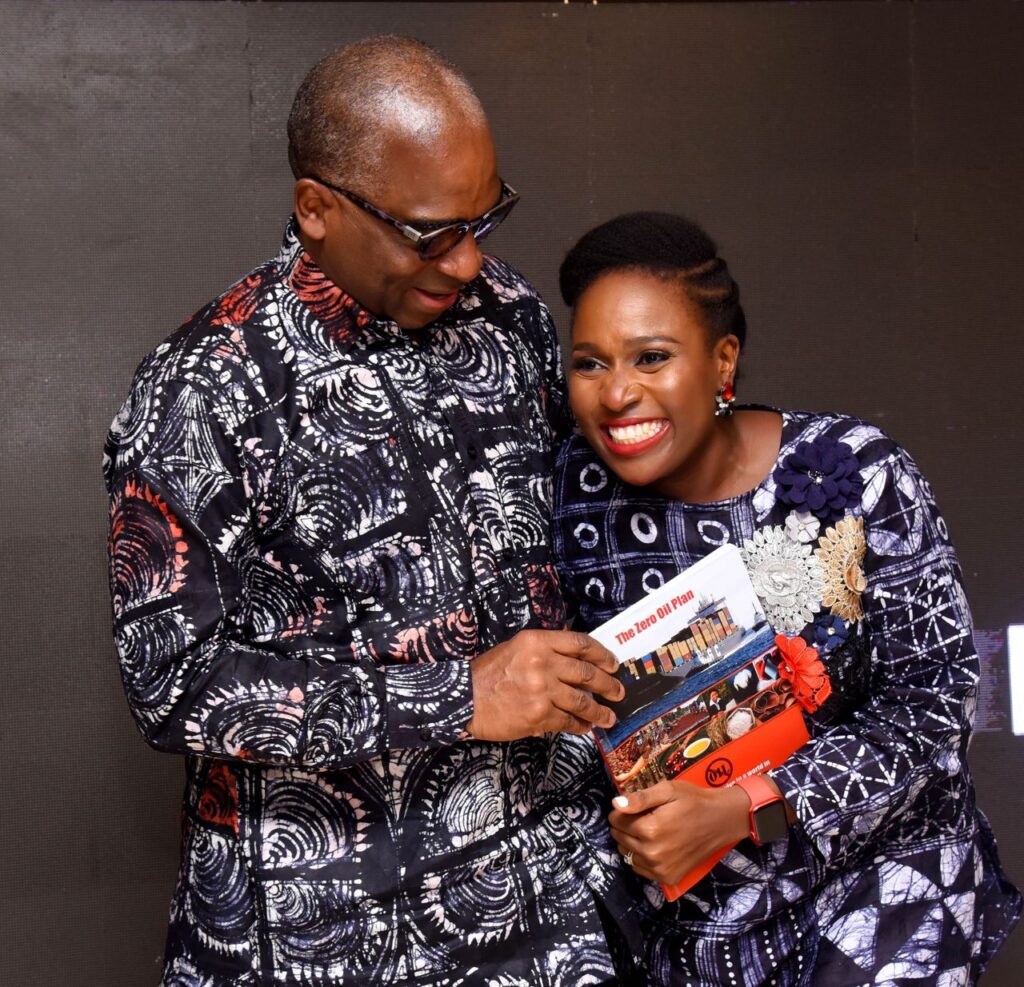
Today, the Adire textile is no longer limited to being used as clothing material alone. It is now being used creatively in different ways. You can use it to make note books, throw pillows, wall arts, lamp shades etc.

You will see below, the way Bellafricana creatively uses Adire on the books we produce on commission as souvenirs for clients’ weddings, birthdays, company events and so much more. The textile comes out so beautifully and perfectly that you might be tempted to keep them all for yourself instead of handing them out to your guests eventually. This is true for most our books really.
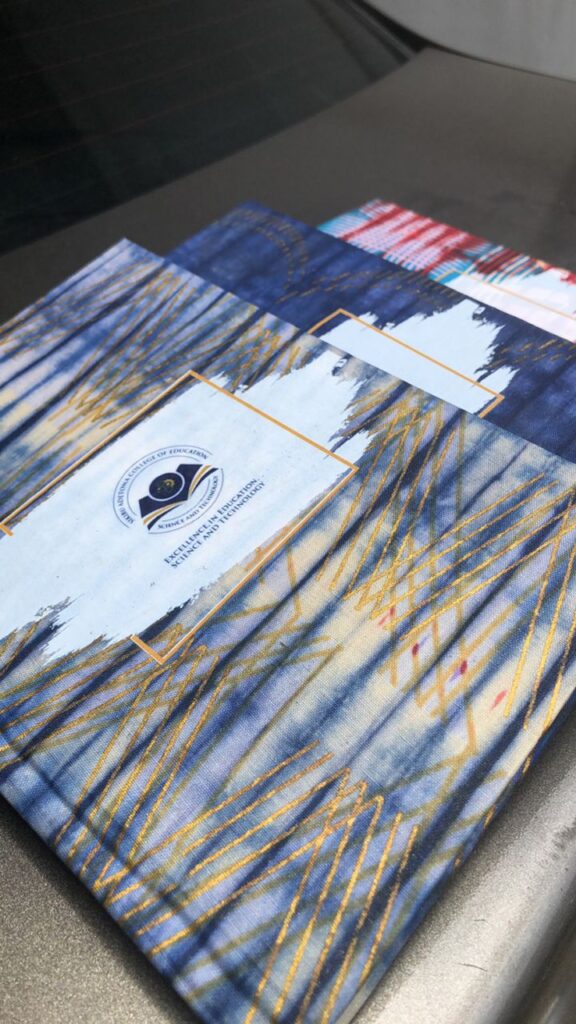

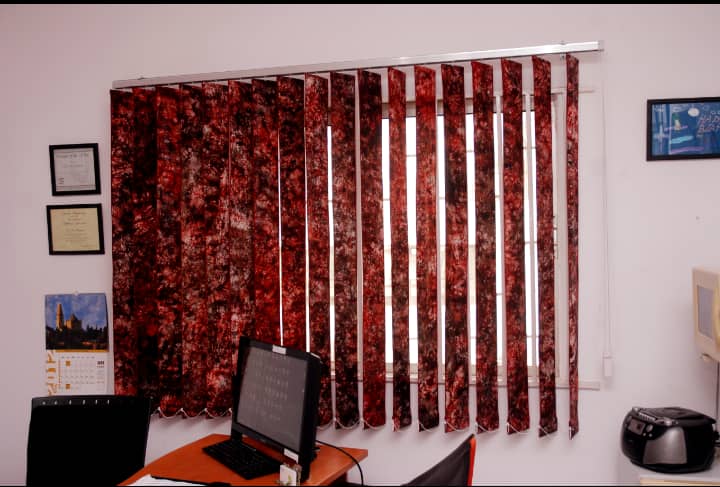
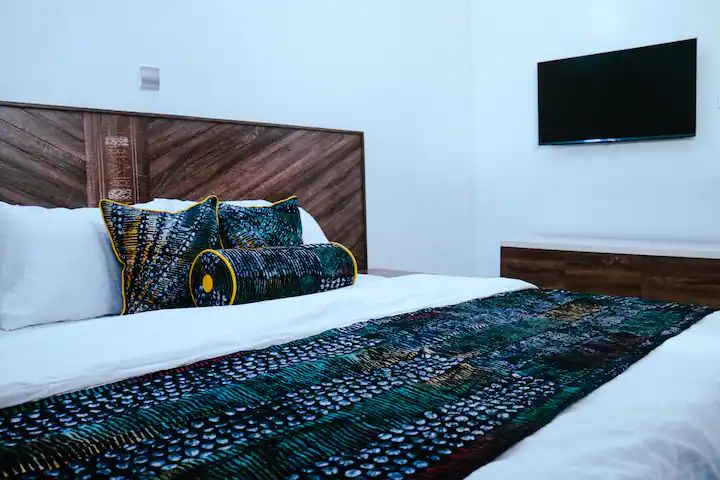
Have you checked out our social media? We’re on Facebook, Instagram, Twitter, Linkedin, Pinterest etc.
References
[1] Wikipedia – Adire (Textile Art)
[2] African Research Review: An International Multidisciplinary Journal, Ethiopia Vol. 7 (2), Serial No. 29, April, 2013:350-370 by Areo, Margaret Olugbemisola and Kalilu, Razaq Olatunde Rom
[3] The Guardian – A Short History of Adire
[4] Emur Ogumor (1993:110). Certificate Art for Junior and Senior Secondary School. Ibadan: University Press Ltd.
[5] Mgbakoigba: Journal of African Studies, Volume 4, 2015. TIE – DYE (ADIRE) AMONG THE JUKUN PEOPLE by Gausa Solomon and Abubakar Ezra
[6] Tie-die US – Tie-dye Through the Ages – A History of Tie-dye
Adire Cloth in Nigeria : A Book Review on Adire Textile
[dropcap custom_class=”normal”] Adire cloth (pronounced Ah-DEER-eh), is one of the many African textiles I really love. It is quite versatile and I love the way the patterns can be so simple and yet unique. It is an age old textile of African origin which has been brought up in several discussions for many years.
With the changing times and discovery of newer findings, a revised edition of old Adire cloth publications is a welcome introduction to our knowledge accumulation. Adire is a Yoruba word for indigo-dyed style of fabrics, it is so unique that it can be considered a form of cloth art…. [/dropcap]
Continue reading
Ankara Wedding Inspirations
[dropcap custom_class=”normal”] Do something different from the norm with these lovely Ankara wedding ideas we’ve got outlined here.
Ankara to some people may just be known as the capital of Turkey, but to many Africans and even globally now, it is a beautifully coloured fabric that has been worn for ages.
Mostly this fabric is made of cotton material. It is available as African wax print, Holland wax or Dutch wax. In this article, we will be talking about various ways you can use Ankara in your wedding. [/dropcap]
Continue reading


